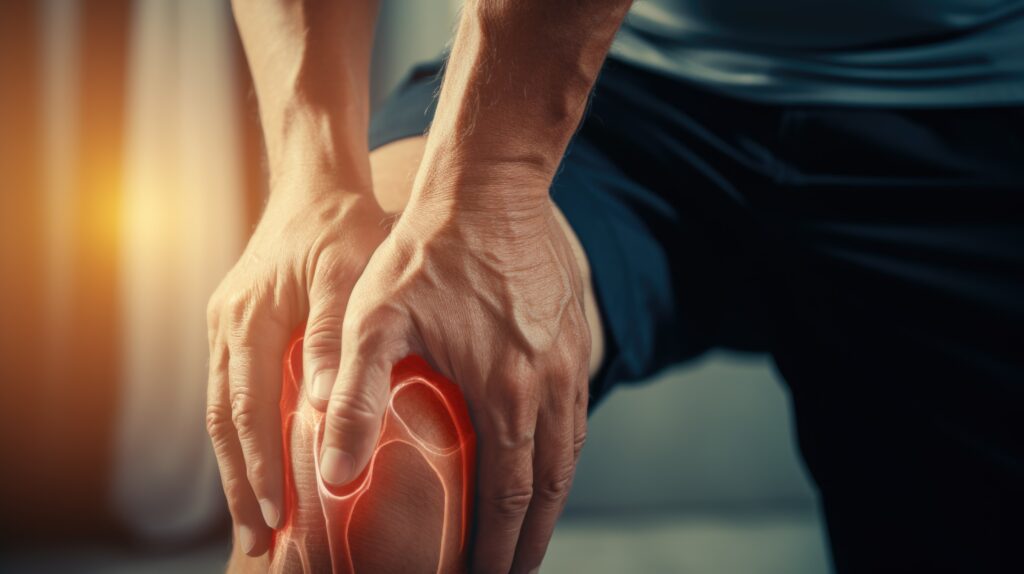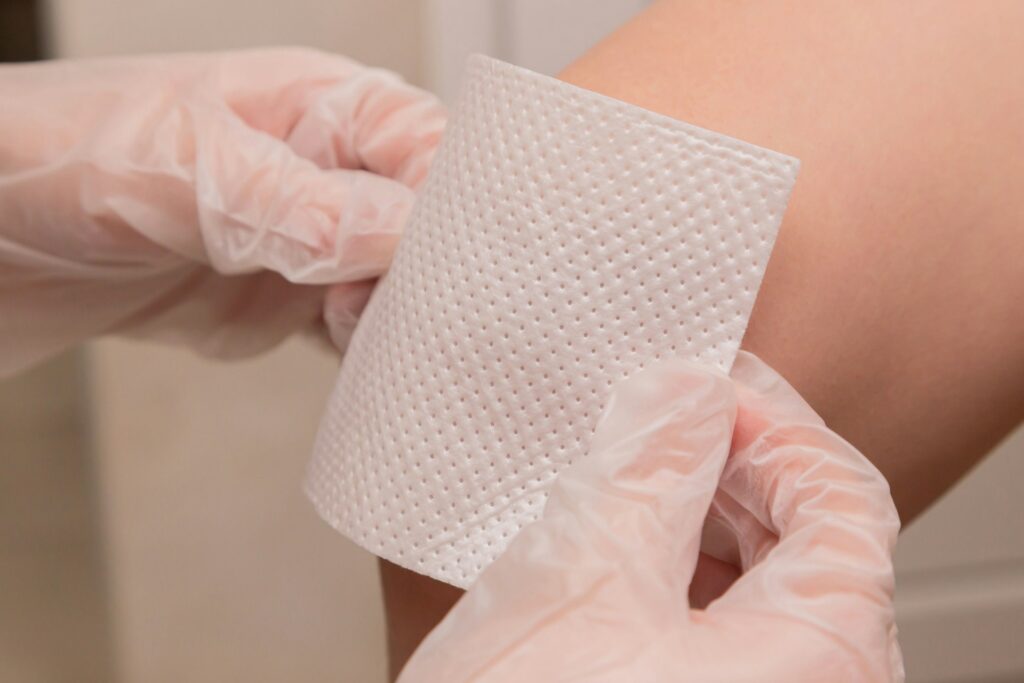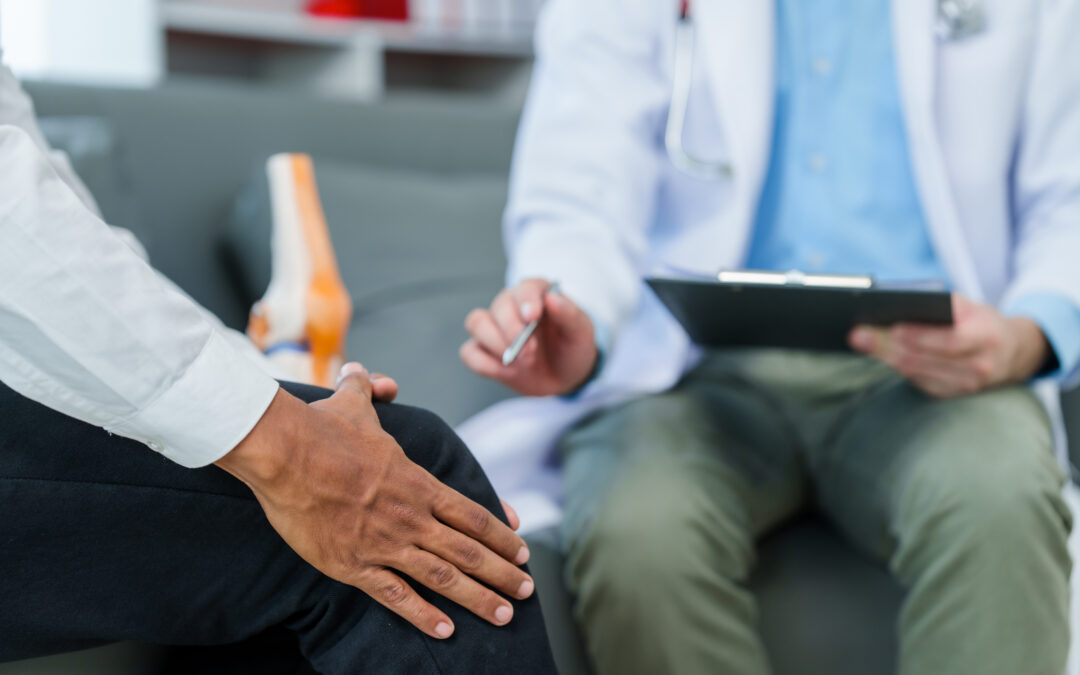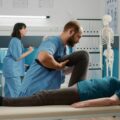Knee pain, it’s the worst. One minute, you’re conquering that mountain hike; the next, your knee feels like it’s filled with pebbles. However, you’re not alone. Tons of people deal with knee pain, whether it’s from pushing a little too hard at the gym or just everyday life taking its toll.
Luckily, there are ways to kick that knee pain to the curb. Some treatment options include:
Home Remedies For Immediate Relief
You can fight back against your knee pain without a trip to the doctor unless it’s super serious. Here are some tricks to get your knee feeling happy again, fast:
Give It a Break
Your knee needs some TLC! Avoid activities that make the pain worse. Take a break from that intense workout or that stubborn yard work. Let your knee know you care!
Use Ice
Grab some ice (or a bag of frozen peas works wonders in a pinch) to tame the swelling. Wrap it in a towel and cuddle it up to your knee for 15 to 20 minutes a few times a day. The cold will numb the pain and help the swelling go down.
Squeeze It Gently
A knee brace or wrap can give your knee some much-needed support and keep the swelling in check. Just make sure it’s snug, not suffocating! You still need good circulation in there.
Elevate That Leg
Gravity is your friend. Prop your leg up on pillows whenever you’re resting. This helps drain fluids away from your knee and reduces swelling. So, put your feet up and relax.
These are all simple things you can do at home to get some quick relief. They’re perfect for minor knee pain or soreness from overuse. But remember, if the pain is super bad or doesn’t improve after a few days, it’s always best to consider more advanced treatments like a partial knee replacement procedure or see a doctor to make sure nothing more serious is going on.
Over-The-Counter Medications
Over-the-counter (OTC) medications can be an effective way to manage knee pain. These medications include:
Pain Relievers
Acetaminophen can help reduce pain without causing stomach issues. It’s often recommended for those who cannot take NSAIDs due to other health conditions.
Nonsteroidal Anti-Inflammatory Drugs (NSAIDs)
Ibuprofen and naproxen can reduce pain and inflammation. These medications can be particularly helpful if your knee pain is due to arthritis or an acute injury, as they address both pain and swelling.
While OTC medications can provide relief, it’s important to follow the recommended dosage and consult with a healthcare provider if you have any concerns. Long-term use of NSAIDs should be monitored by a doctor due to potential side effects like gastrointestinal issues or increased risk of heart problems.
Physical Therapy And Exercise
Physical therapy can play a significant role in treating knee pain. A physical therapist can design a personalized exercise program that includes:
Strengthening Exercises
Building the muscles around your knee can provide better support and reduce pain. Focus on exercises that target your quadriceps, hamstrings, and calves.
Flexibility Exercises
Stretching can improve your range of motion and decrease stiffness. Incorporate stretches for your hamstrings, calves, and quadriceps.
Balance And Stability Exercises
Enhancing balance can prevent falls and further injuries. Simple activities like standing on one leg or using a balance board can improve stability. 
Engaging in regular physical therapy sessions can help you regain strength and mobility, making everyday activities more manageable. Additionally, your therapist can teach you proper techniques to avoid future injuries and manage pain effectively.
Prescription Medications
If OTC medications aren’t effective, your doctor may prescribe stronger medications, such as:
Stronger NSAIDs
Prescription-strength ibuprofen or other NSAIDs can offer more significant relief, particularly for moderate to severe pain.
Corticosteroids
These medications can be taken orally or injected directly into the knee to reduce inflammation. Injections can provide quick relief for severe pain and inflammation.
Hyaluronic Acid Injections
These injections can provide lubrication and reduce pain in the knee joint. They mimic the natural fluid in your joints, offering cushioning and reducing friction.
Your doctor will evaluate your condition and medical history to determine the most suitable prescription medication, ensuring effective and safe pain management.
Alternative Therapies
Alternative therapies can complement traditional treatments and provide additional relief. These therapies include:
Acupuncture
This traditional Chinese practice involves inserting thin needles into specific points to relieve pain. Acupuncture can help stimulate nerves, muscles, and connective tissue, potentially boosting your body’s natural painkillers.
Massage Therapy
Professional massage can reduce muscle tension and improve circulation around the knee. Regular sessions can also enhance flexibility and promote relaxation, which can further alleviate pain.
Chiropractic Care
Adjustments by a chiropractor can improve joint function and reduce pain. Chiropractic care focuses on aligning your spine and joints, which may help reduce stress on your knee and improve overall mobility.
These therapies can be beneficial when combined with other treatment options, offering a holistic approach to pain management. Integrating these alternative methods into your routine can provide a well-rounded strategy for managing knee pain.
Conclusion
When it comes to knee pain treatment, there’s no one-size-fits-all solution. The best approach will depend on the cause and severity of your pain, your overall health, and your activity level. It’s crucial to consult with your doctor to receive a proper diagnosis and discuss the most appropriate treatment options for you. With the right approach, you can find relief from knee pain and get back to enjoying an active life.
My name is Andrea Thompson and I’m a home based freelance writer. I’m 23 years old, married to my best friend, and mother to a wonderfully independent and opinionated 3 year old girl and step-mother to a sweet seven year old boy. I live in a tiny, little town in Kentucky, where I spend my free time fishing with my kids.
Writing has always been my passion, which I followed through high school, and for a while in college. Life happened, and once I discovered we were pregnant, I switched directions; opting for the healthcare industry because of the stability.
Finally, years later, I was in a place where I could leave the day job that never truly made me happy, and pursue my dreams. I’ve built, and am still building, my writing career from scratch. But, I’m passionate and I’m good at what I do. And, in the end, I can prove to my daughter that she can do anything she wants with this life.





